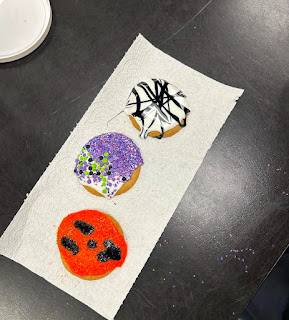I graduated in 1973, and the first year that Crooms was closed—or repurposed—was the 1970-1971 school year.
My first year at Seminole was the first year Crooms was closed. I remember being a little frightened. There was a bit of unrest on campus. We had police officers on campus every day—which was strange in the days before security guards on campus. There were some very angry people on both sides.
In elementary school, I remember having one or two black students in each class, but never full integration.
Many of the black students who came to Seminole from Crooms were angry at losing their whole heritage as a school. There were kids whose parents’ parents had attended Crooms, and suddenly their school teams, mascots, and more had disappeared. White students were not so welcoming to them, either.
You students today don’t have that same “them and us” idea—you seem pretty well-accustomed to attending school together. There aren’t as many issues as today.
There wasn’t enough room for the additional students—they took a whole additional school, and placed it on top of another one. So the solution was running double sessions. One session was from seven to noon, and another was from noon to five. We didn’t have to take many classes either, only five hours of instruction per day.
The integration was part of a federal order. It caused a lot of trouble for everybody.
It may seem silly to you now, how nice everyone is now, but on the homecoming court, only one black girl was nominated, and there were many more white girls, so because of that, all the black students voted for her, and she won. So the next year, they actually had a black queen and a white queen. I’m actually surprised they didn’t do a black student president and a white student president.
That’s a really good thing, though, that people of all races have now been able to occupy positions of honor in our school.
We did have unrest. Teachers would lock their doors during the day. There weren’t riots, but groups of people who would stream through the halls, screaming and wild. We were even told not to go to the bathroom alone because people of the opposite race would attack you. I had a friend who got beat up and mugged in the bathroom once. We got our first security guards right around that time—1973.
Wayne Epps was an assistant principal at the time, and his job was to walk the campus with a big stick. I don’t know if he ever used it on anybody, though.
The wealthy families were sending their children over to Trinity Prep or Bishop Moore around that time to avoid that—the whole attitude that they didn’t want their children associating with black kids. They didn’t say it, but you knew how they felt. I had a few friends in middle school who didn’t make it on to Seminole High School because of that.
I love how everybody gets along now. It took that integration and that painful period in order to get better.
Is it better? As far as the students go—yes. As far as community perceptions—I think no. My opinion is that Seminole County has a bad perception of SHS because of the problems in the 1960s. We had to even meet with some Realtors who refused to show houses in this area because of the school. They told their clients that they wouldn’t want their children to go to Seminole. Because we were the school that had those problems, the perception still lingers among older residents. We’ve worked really hard to overcome that in recent years.























